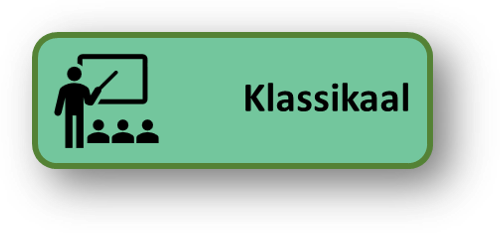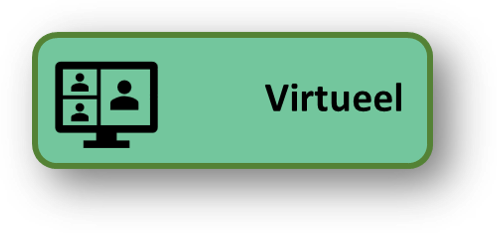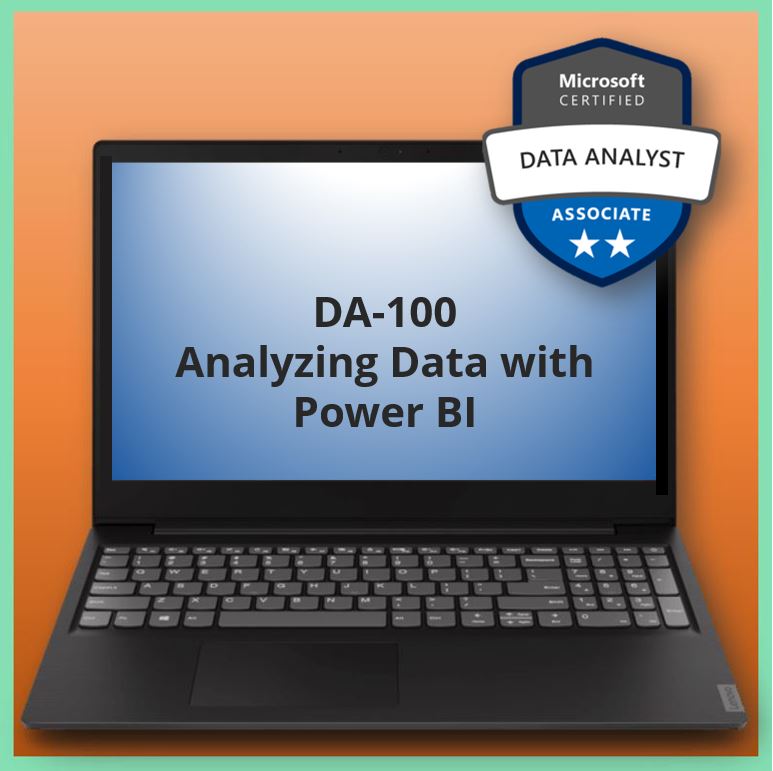Aangeboden leervormen



Analyzing Data with Power BI - DA-100
This course will discuss the various methods and best practices that are in line with business and technical requirements for modeling, visualizing, and analyzing data with Power BI. The course will also show how to access and process data from a range of data sources including both relational and non-relational data. This course will also explore how to implement proper security standards and policies across the Power BI spectrum including datasets and groups. The course will also discuss how to manage and deploy reports and dashboards for sharing and content distribution. Finally, this course will show how to build paginated reports within the Power BI service and publish them to a workspace for inclusion within Power BI.

FILMPJE
Voor wie
The audience for this course are data professionals and business intelligence professionals who want to learn how to accurately perform data analysis using Power BI. This course is also targeted toward those individuals who develop reports that visualize data from the data platform technologies that exist on both in the cloud and on-premises.
Programma
Module 1: Introduction
This module explores the landscape of the Power BI portfolio and describes several use cases for Power BI. The course then identifies and describes the role and responsibilities of a Data Analysts.Lessons
• The Power BI Portfolio
• Identifying Tasks of the Data Analyst
Lab : Getting Started
• Getting Started
After completing this module, students will be able to:
• Describe the Power BI landscape of products and services.
• Describe use cases for Power BI
• Identify the tasks that are performed by a Data Analyst
Module 2: Getting and Profiling Data
This module explores identifying and connecting to different data sources. The student will also learn the basics on how to identify and optimize query performance issues. They will also learn how to perform proper data profiling in preparation for the subsequent step of cleaning and shaping the data prior to loading the data.Lessons
• Data Sources
• Storage Modes
• Query Performance
• Data Profiling
Lab : Preparing Data in Power BI Desktop
• Prepare Data
After completing this module, students will be able to:
• Identify the different data sources
• Explain the different connection methods and why
• Identify query problems and optimize.
• Identify data anomalies
• Examine data structures
Module 3: Cleaning and Transforming Data
This module teaches the fundamental concepts of designing a data model for proper performance and scalability. It instills in the student a list of items to think about prior to building the model.Lessons
• User-Friendliness
• Combining Queries
• Data cleaning and transformation
• Advanced capabilities
• Configuring data loading and resolving errors
Lab : Loading Data in Power BI Desktop
• Loading Data
After completing this module, students will be able to:
• Resolve data inconsistencies
• Apply data shape transformations
• Evaluate and transform column data types
• Resolve data import errors
Module 4: Designing a Data Model
This module teaches the fundamental concepts of designing a data model for proper performance and scalability. It instills in the student a list of items to think about prior to building the model.Lessons
• Data modeling basics
• Measures and Dimensions
• Model Performance
Lab : Data Modeling in Power BI Desktop
• Create Model Relationships
• Configure Tables
• Review the model interface
• Create Quick Measures
After completing this module, students will be able to:
• Define relationships and their cardinality
• Configure table and column properties
• Define quick measures
• Understand how the design of the model impacts performance
Module 5: Developing a Data Model
In this module the student will apply the steps learned in the previous module and build a data model while learning and implementing additional items to create the foundation of the model. The student will be introduced to initial security concepts and the Q&A feature in this module.Lessons
• Common data modeling techniques
• Adding columns to support the data model
• Row-level security
• Q&A considerations
Lab : Advanced Data Modeling
• Create a man-to-many relationship
• Enforce row-level security
After completing this module, students will be able to:
• Resolve circular and many/many relationships
• Create groupings and binnings
• Describe, and set up, the Q&A feature
Module 6: Creating Model Calculations with DAX
This module first introduces the student to DAX and some of the critical functions and operators necessary to enhance a data model, including the concepts of Measures, and calculated columns and tables, and Time Intelligence.Lessons
• Introduction to DAX
• Creating tables and columns
• Measures
• The CALCULATE expression
• Time-Intelligence functions
Lab : Using DAX in Power BI – Part 1
• Create Calculated tables
• Create Measures
Lab : Using DAX in Power BI – Part 2
• Work with Filter content
• Work with Time-Intelligence
• Publish the Power BI Desktop file
After completing this module, students will be able to:
• Use DAX for simple formulas and expressions
• Create calculated tables and columns
• Build simple measures
Module 7: Optimizing Model Performance
In this module the student is introduced to steps, processes, and concepts necessary to optimize a data model for enterprise-level performance.Lessons
• Fine-tune the data model
• Cardinality
• Identifying performance issues
After completing this module, students will be able to:
• Analyze query plans and dependencies
• Identify poor performing measures and relationships
• Work with aggregations
• Improve cardinality levels
Module 8: Creating Reports
This module introduces the student to the fundamental concepts and principles of building a report, including selecting the correct visuals, designing a page layout, and applying basic but critical functionality including slicing and filtering. This important topic of designing for accessibility is also covered.Lessons
• Selecting a visualization
• Configuring visualizations
• Formatting pages
• Enhancing the report
Lab : Designing a report in Power BI Desktop – Part 1
• Create a report
• Sign in to the Power BI Service
After completing this module, students will be able to:
• Design a page layout
• Select and add appropriate visualization type
• Add basic report functionality
• Understand and design for accessibility
Module 9: Enhancing Reports for Usability and Performance
This module helps the student think beyond the basics of report building and discusses topics for enhancing the report for usability and performance. The student will leave this module with knowing that a report is not something to just look at, but is a living canvas that tells a story, and should be designed as such.Lessons
• Bookmarks and navigation
• Designing cohesive pages and interactions
• Improving reports
Lab : Designing a report in Power BI Desktop – Part 2
• Configure Sync Slicers
• Configure Drill-through
• Add Conditional Formatting
• Add Bookmarks and Buttons
• Explore the Report
After completing this module, students will be able to:
• Add Quick Insights
• Configure Sync Slicers
• Configure interactions between visuals
• Identify usability enhancements
Module 10: Creating Dashboards
In this module the student learns about dashboards and the many features and functionality they contain. The student learns how to take the report they built in the previous module and pin it to a dashboard, then enhance to dashboard for additional usability and insights.Lessons
• Dashboard design
• Real-time dashboards
• Dashboard enhancements
Lab : Creating a Power BI Dashboard
• Create a Dashboard
• Refresh the dataset
• Review the dashboard
After completing this module, students will be able to:
• Create a dashboard
• Set up the Q&A feature
• Mange tiles and work with lie report pages
• Explain and set the mobile view
Module 11: Enhancing Reports and Applying Advanced Analytics
This module helps the student apply additional features to enhance the report for analytical insights in the data, equipping the student with the steps to use the report for actual data analysis. This module will also arm the student with additional steps and concepts to apply and perform advanced analytics on the report for even deeper and meaningful data insights.Lessons
• Navigation
• Basic analysis
• Grouping, binning, and clustering
• Analysis over time
• Advanced analysis
Lab : Data Analysis in Power BI Desktop
• Create a report
• Create a Scatter chart
• Create a Forecast
• Work with a Decomposition Tree
• Work with Key Influencers
After completing this module, students will be able to:
• Explore statistical summary
• Identify outliers in the data
• Use the Q&A visual
• Perform top N analysis
Module 12: Managing and Sharing Power BI Assets
In this module the student will learn the concepts of managing Power BI assets, including datasets and workspaces, as well as how to apply role-level security to a dataset. This module teaches the student how to create and manage workspaces, as well as how to share content, including reports and dashboard, and how to distribute an App.Lessons
• Dataset management
• Enhancing datasets
• Configure row-level security
• Create and Manage workspaces
• Enhancing datasets and reports in the workspace
• Sharing and distributing content
Lab : Publishing and Sharing Power BI Content
• Configure dataset security
• Share a Dashboard
• Publish an APP
After completing this module, students will be able to:
• Configure dataset refresh
• Configure row-level security on the dataset
• Create and manage a workspace
• Publish or update assets in a workspace
• Understand workspace collaboration
Module 13: Working with Paginated Reports in Power BI
This module will teach the student about paginated reports. The student will learn what they are how they fit into the Power BI spectrum, and then look at how to build and publish a report.Lessons
• Introduction to Paginated Reports
• Data sources and datasets
• Adding visual elements
• Enhancing and publishing reports
Lab : Creating a Paginated report
• Getting Started
• Develop the report
After completing this module, students will be able to:
• Explain paginated reports
• Create a paginated report
• Create and configure a data source and dataset.
• Work with charts and tables on the report.
Voorkennis
In addition to their professional experience, students who take this training should have technical knowledge equivalent to the information found in the Azure Fundamentals course.
Examen
MICROSOFT DA-100
Direct naar examen: MICROSOFT DA-100
Duur training
Klassikaal: 4 dagen
Open leercentrum: 5 dagen







